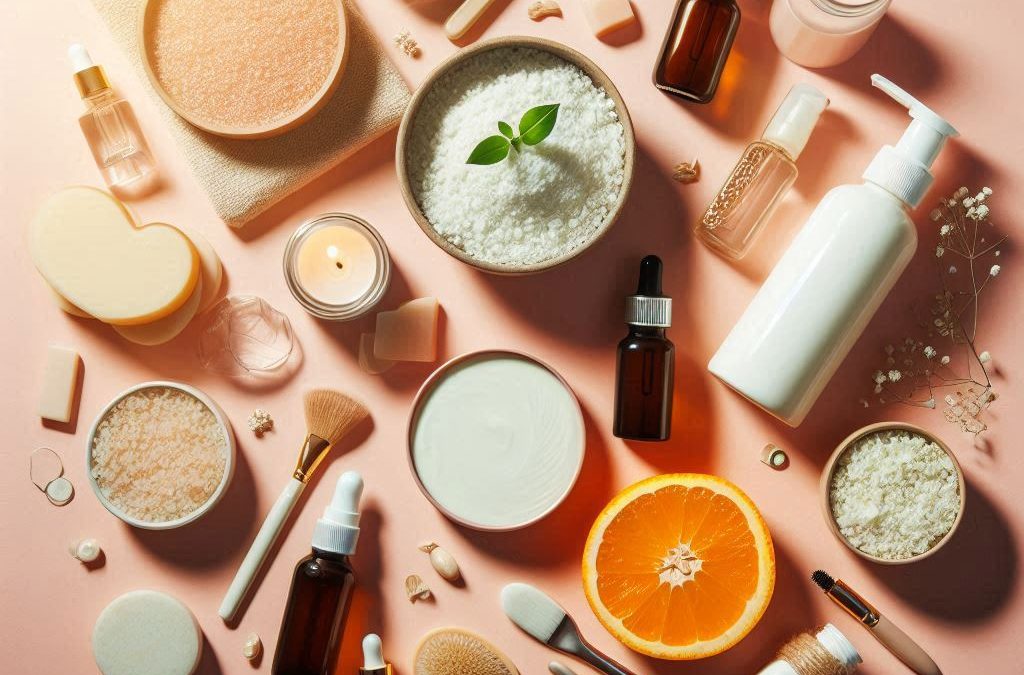Understanding Your Skin Type
The Importance of Knowing Your Skin Type
Before diving into products, it’s crucial to understand your skin type. Why? Because the effectiveness of your skincare routine hinges on how well it suits your skin’s needs. Using the wrong products can lead to irritation, breakouts, or excessive dryness.
How to Identify Your Skin Type
To identify your skin type, start by examining your skin’s behavior throughout the day:
- Oily Skin: Shiny appearance, large pores, and prone to acne.
- Dry Skin: Flaky, tight feeling, and may have red patches.
- Combination Skin: Oily in the T-zone (forehead, nose, chin) but dry elsewhere.
- Sensitive Skin: Easily irritated, prone to redness, and reactive to new products.
- Normal Skin: Balanced, with minimal imperfections and small pores.
Morning Skincare Essentials
Cleansing in the Morning
Why Morning Cleansing Matters
Cleansing your face in the morning removes any overnight sweat, oils, and dead skin cells that have accumulated. This step preps your skin for better absorption of subsequent products.
Best Cleansers for Different Skin Types
- Oily Skin: Gel or foaming cleansers that control excess oil.
- Dry Skin: Cream cleansers that hydrate and nourish.
- Sensitive Skin: Fragrance-free and gentle cleansers.
The Role of Toners
Benefits of Using Toners
Toners balance your skin’s pH levels, remove any remaining impurities, and prepare your skin to absorb moisture effectively. They can also target specific skin issues like dryness or enlarged pores.
Choosing the Right Toner
- Oily Skin: Look for toners with salicylic acid to control oil.
- Dry Skin: Choose alcohol-free toners with hydrating ingredients.
- Sensitive Skin: Opt for calming ingredients like chamomile or aloe vera.
Moisturizing for Hydration
Types of Moisturizers
Moisturizers come in various forms, including creams, lotions, gels, and ointments. Each type caters to different skin needs and preferences.
How to Apply Moisturizer Effectively
Apply your moisturizer while your skin is still slightly damp to lock in hydration. Use upward, circular motions for better absorption and improved circulation.
Sun Protection is Non-Negotiable
Understanding SPF
Sun Protection Factor (SPF) measures how well a sunscreen protects against UVB rays. SPF 30 is typically recommended for daily use, blocking about 97% of UVB rays.
Top Sunscreens for Daily Use
Opt for broad-spectrum sunscreens that protect against both UVA and UVB rays. Consider formulations with additional skincare benefits, like antioxidants or hydration.
Night Skincare Routine Essentials
Removing Makeup and Impurities
Why Double Cleansing is Key
Double cleansing involves using an oil-based cleanser to remove makeup and sunscreen, followed by a water-based cleanser to clear out impurities. This ensures your skin is thoroughly cleaned and prepped for treatment.
Effective Makeup Removers
Look for gentle, non-comedogenic makeup removers. Micellar water, cleansing oils, and balms are excellent choices for breaking down makeup without stripping the skin.
Nighttime Treatment Serums
Targeting Skin Concerns with Serums
Serums are concentrated solutions designed to address specific skin issues such as aging, hyperpigmentation, or acne. They deliver active ingredients deeper into the skin.
How to Layer Serums Properly
Apply serums from thinnest to thickest consistency. Wait a few minutes between each layer to allow proper absorption. Pat serums onto the skin gently rather than rubbing.
The Importance of Night Creams
What to Look for in a Night Cream
Night creams are thicker and richer than day creams, focusing on repair and rejuvenation. Look for ingredients like peptides, retinol, and hyaluronic acid.
Applying Night Cream for Best Results
Apply night cream as the final step in your nighttime routine. Use upward strokes to stimulate blood flow and ensure the cream penetrates effectively.
Customizing Your Skincare Routine
Adjusting Your Routine with the Seasons
Your skin’s needs change with the seasons. During colder months, opt for richer, more hydrating products to combat dryness. In the summer, switch to lighter, oil-free formulations.
Tailoring Products to Your Age and Skin Concerns
As you age, your skin concerns will evolve. Incorporate anti-aging products with retinoids or peptides in your 30s and beyond. Focus on hydration and sun protection at every age to maintain skin health.
Conclusion
Creating a skincare routine tailored to your needs doesn’t have to be daunting. By understanding your skin type and incorporating the right products, you can achieve a glowing complexion. Remember to adjust your routine with the seasons and as your skin’s needs change.
FAQs
1. How often should I change my skincare routine?
You should reassess your skincare routine every few months or whenever you notice changes in your skin. Factors like season changes, hormonal shifts, or new skin concerns might require adjustments.
2. Can I use the same products for morning and night?
While some products like cleansers and moisturizers can be used both morning and night, specific products such as sunscreens are strictly for daytime use. Nighttime routines often include treatments like retinoids that are best used before bed.
3. Is toner necessary for a skincare routine?
While not essential for everyone, toner can provide extra benefits like hydration, pH balance, and targeting specific skin issues. It’s worth considering if you want to enhance your routine.
4. What should I do if my skin reacts to a new product?
If your skin reacts to a new product, discontinue use immediately and consult a dermatologist if irritation persists. Introduce new products gradually to monitor your skin’s response.
5. How long does it take to see results from a new skincare routine?
Visible results can vary based on the products and your skin type, but generally, you can expect to see changes within 4 to 6 weeks of consistent use.

